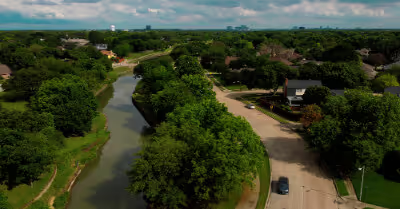Table of Contents
How much does Assisted Living cost?
The cost of assisted living varies widely based on a variety of factors. It can be as little as $2,000 a month, or it can be over $9,000 a month. Some of this depends on where you live, and some of it depends on the specific facility you choose.
The nationwide average for assisted living is $4,000/month, and that’s a good baseline for you to use. Most states average between $3,000 and $4,000 per month, and few have average costs higher than $4,000. Notably, the average cost of assisted living in New Jersey is $6,000 per month, and in the District of Columbia the average cost is $9,266 per month, which makes it the most expensive place in the United States for assisted living at the time of this writing. Missouri and Vermont are tied for the most affordable average cost of assisted living, at $2,844 per month.
Remember, though, that these are averages. Every state will have facilities that are much cheaper than the average cost, and much more expensive. Still, the vast majority of states have averages between $3,000 and $5,000 per month, and most facilities you look at will likely be in that range.
Why does it cost so much?
As you can see, assisted living isn’t cheap. Much of that cost is the cost of rent. You’re paying for an apartment, townhome or condo-sized space in most of these facilities, which is already fairly expensive in many places.
This means that much of the cost is determined by the size of the space, and the quality of the building and living facilities. A nicer apartment is going to cost more money, every time.
On top of the rent, you’re paying for all of the amenities that come with an assisted living facility. That means all the meals that are provided, which includes the price of the food, as well as paying the cooks and the dishwashers.It means you’re paying for the housekeeping, the building maintenance, the medication management, the transportation services, and more. Utilities are often included, as well.
When you factor in all the goods and services covered by that $4,000 per month, it’s really quite reasonable. Since the residents no longer need to buy groceries, cleaning supplies, car insurance, gas, or pay for separate utilities, the monthly cost of assisted living may be much closer to their typical monthly expenses than you realize.Some people even find that they spend less money per month once they’ve moved into assisted living.
Main factors in the cost of assisted living
To understand the pricing of an assisted living facility, it helps to know what the prices are based on. One of the most important factors in the cost of assisted living is the level of care.
The facility will assess the level of care that’s needed, and base their monthly price accordingly. If the resident needs help showering or bathing, then they will also assess how often that person needs assistance. For instance, some residents may need help bathing every day, while others may only need help washing their hair once or twice a week. Likewise, some residents may need help with getting dressed each day, grooming (shaving, brushing teeth, etc), or mobility. Some residents may need help with their incontinence, while others may require help to eat.
The less specialized care a resident needs, the lower their monthly cost will be.Even the number of medications they need can be factored in, because if they need less help managing their medications then that’s less care that they need.
In addition to the level of care, there are a few other factors which can affect the cost of assisted living. The floor plan you choose is a large factor, since that’s what you’re paying rent on. The staff-to-resident ratio is also important- a higher ratio means higher costs, although it also typically means a higher quality of care.
Finally, location and timing make a difference. Suburban and rural facilities are generally much cheaper than urban ones. You may be able to negotiate a better price if you’re moving in at the end of the month, the quarter, or the year, when the facility is dealing with it’s budget and facing the same kind of financial pressures as any other business.
Are there ways to save money on Assisted Living?
Even so, $4,000 a month is a lot of money, and many people want to know if there are ways that they can cut costs on assisted living. Unfortunately, there are not a lot of options when it comes to that.
The most obvious way to save money on assisted living is to use the cheapest facility you can find. While this may be necessary in some cases, we have to advise you to proceed with caution. There’s a reason why that facility is cheaper than every other assisted living facility in the area, and you’ll want to do your due diligence to find out why. They’re saving costs on the quality of the building, the utilities, the food, or the staff. You really want to find out how they’re keeping the costs low and how that will impact the quality of life for the residents there.
You can also find ways to split the cost of an assisted living facility, like sharing a two-bedroom apartment.Or you can rent a smaller space, since many assisted living facilities offer multiple floor plans, and the smaller ones typically cost less per month.
Splitting a two-bedroom apartment with another resident can save you as much as 20% of the monthly cost, and it has the added benefit of providing easy access to social interaction right in their home.
Is there any kind of financial aid for Assisted Living?
While there aren’t many ways to reduce the cost of assisted living, there are several options that can help you pay for it. We should point out, though, that medicare and medicaid are not viable options here. They do not pay for long-term assisted living.
In fact, most of the options you have available here involve ways of using the residents estate to pay for assisted living. One way to do that is with a reverse mortgage. This is a type of loan where your house is used as collateral for the loan, and you receive monthly payments for it.
Of course, you could also simply sell the home, put the proceeds into a bank account, and use them to pay for assisted living. If they’ve already paid off their mortgage, this will likely be enough to cover the cost of assisted living for several years.
Recent Articles
















